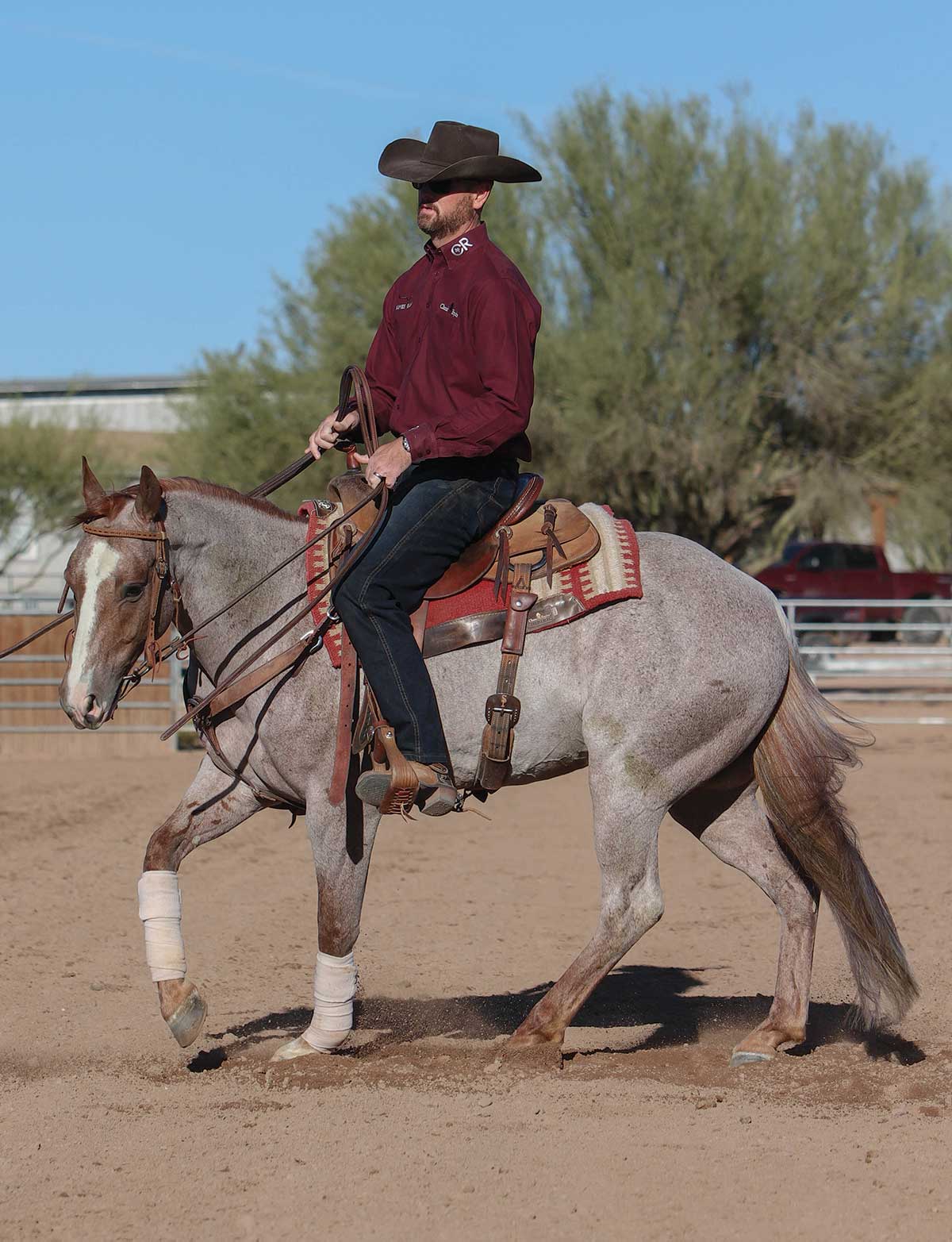
Use a snaffle bit, and ride two-handed to begin. You can go to the bit you regularly ride with and use one hand as you gain confidence and control. Return to the snaffle bit when you feel like your horse needs a tuneup or special attention to any of the parts of the drill. Pay attention to how your horse learns in any drill so you can tailor your methods to get the best response.
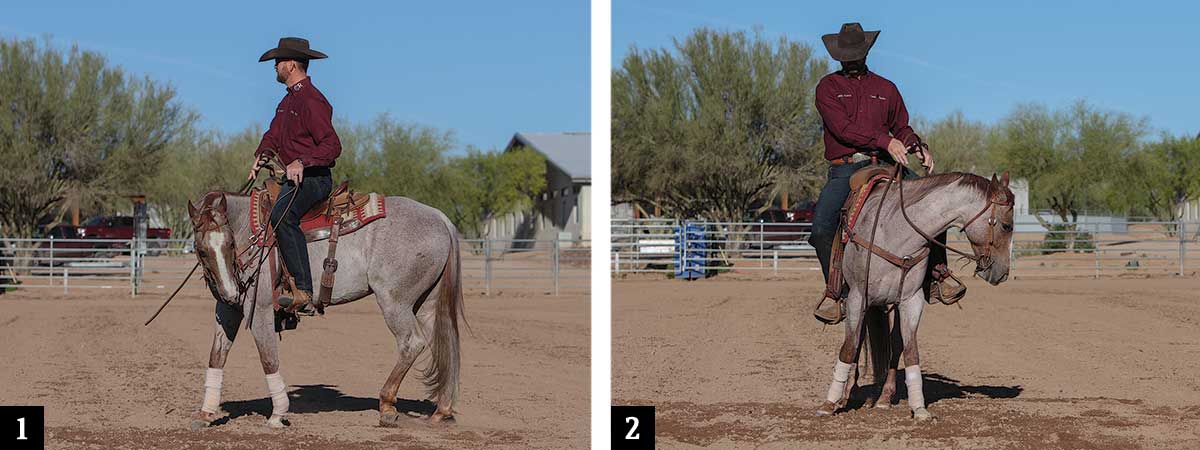
One
Do you ride one direction and cue your horse to go the other? Your horse can’t start a turn correctly—or execute a set of spins—if you’re riding right and telling your horse to go left, as shown here. My body is facing away from the turn cue I’m giving him. These counter-cues confuse your horse and put his body out of position, making it nearly impossible for him to turn correctly.
Two
This confusion leads to your pulling harder for the turn than would usually be necessary, your horse leaning against you instead of responding to the pull, and further problems down the line. It’s easy enough to fix with a simple alteration to your body’s position, which will improve your horsemanship in the long run and lead to a better response from your horse in all activities.
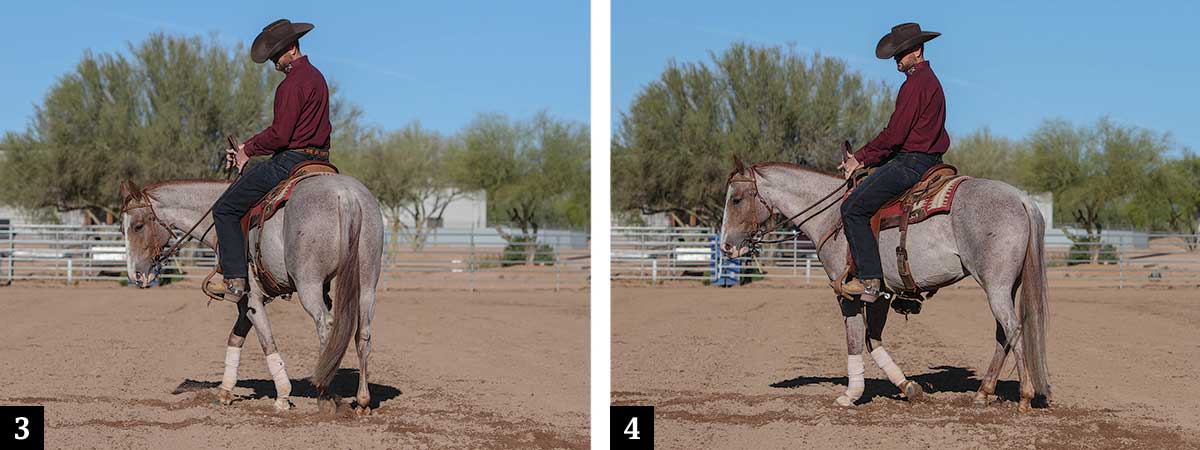
Three
Walk in a small circle, and pay careful attention to your torso. Are you riding with your horse around the circle, with your torso facing the same direction as he’s traveling? Or are you riding away with your body, facing away from the direction of travel? By going with your horse and turning your body to follow his path, you’re fully supporting and committed to your cues, which means clarity for your horse.
Four
By freeing up my core, I can follow my horse’s nose, just like his feet are supposed to do. My body works with my horse instead of against him. And I’m not in his way when we start to turn. When you free up your core, you’ll realize that it’s not all hands and feet when it comes to cueing for turns of any kind, from a simple directional change to a rollback to a set of spins. Think about it this way: Your bellybutton should follow your saddle horn.
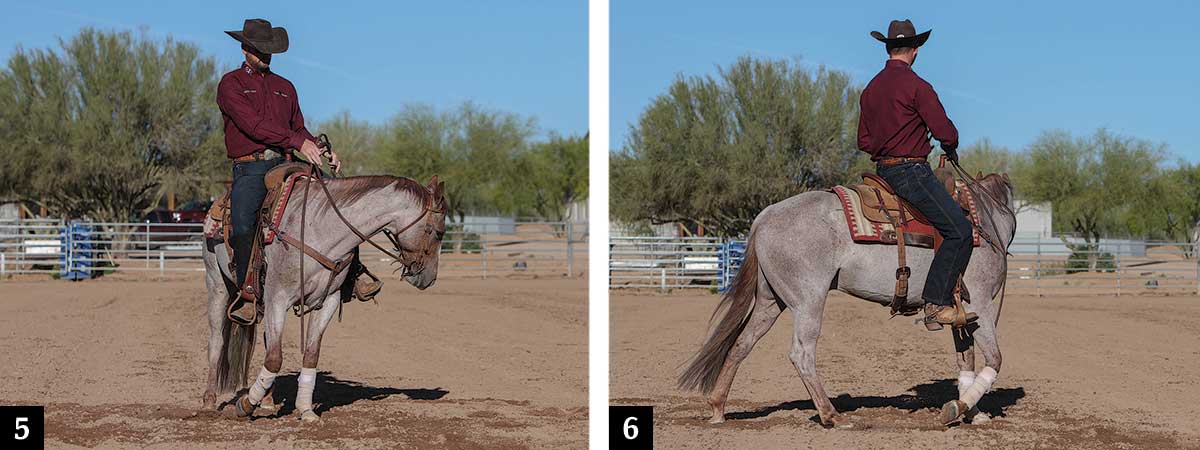
Five
Another way you can hinder your horse’s ability to turn is with too much leg pressure. Just as you want a soft feel with his mouth through your reins and the bit, you want a soft feel with your feet. You likely ride with more pressure from one leg than the other, much the same as you’re right- or left-handed, which causes the horse to reverse-arc away from the turn (bend his body into the turn). You can see my horse start to bend at his ribs into the turn here. Think about not using your dominant leg at all, and you’ll likely have the right balance of pressure.
Six
With my torso following my horse’s nose, enough pressure from my outside leg, and support to maintain forward motion from my inside leg, I can wind down my walking circle into a single turn or a set of spins. I’ve listened to my horse to know the correct mix of rein pull and leg pressure and at what level I should use them, which sets me up for a solid maneuver.
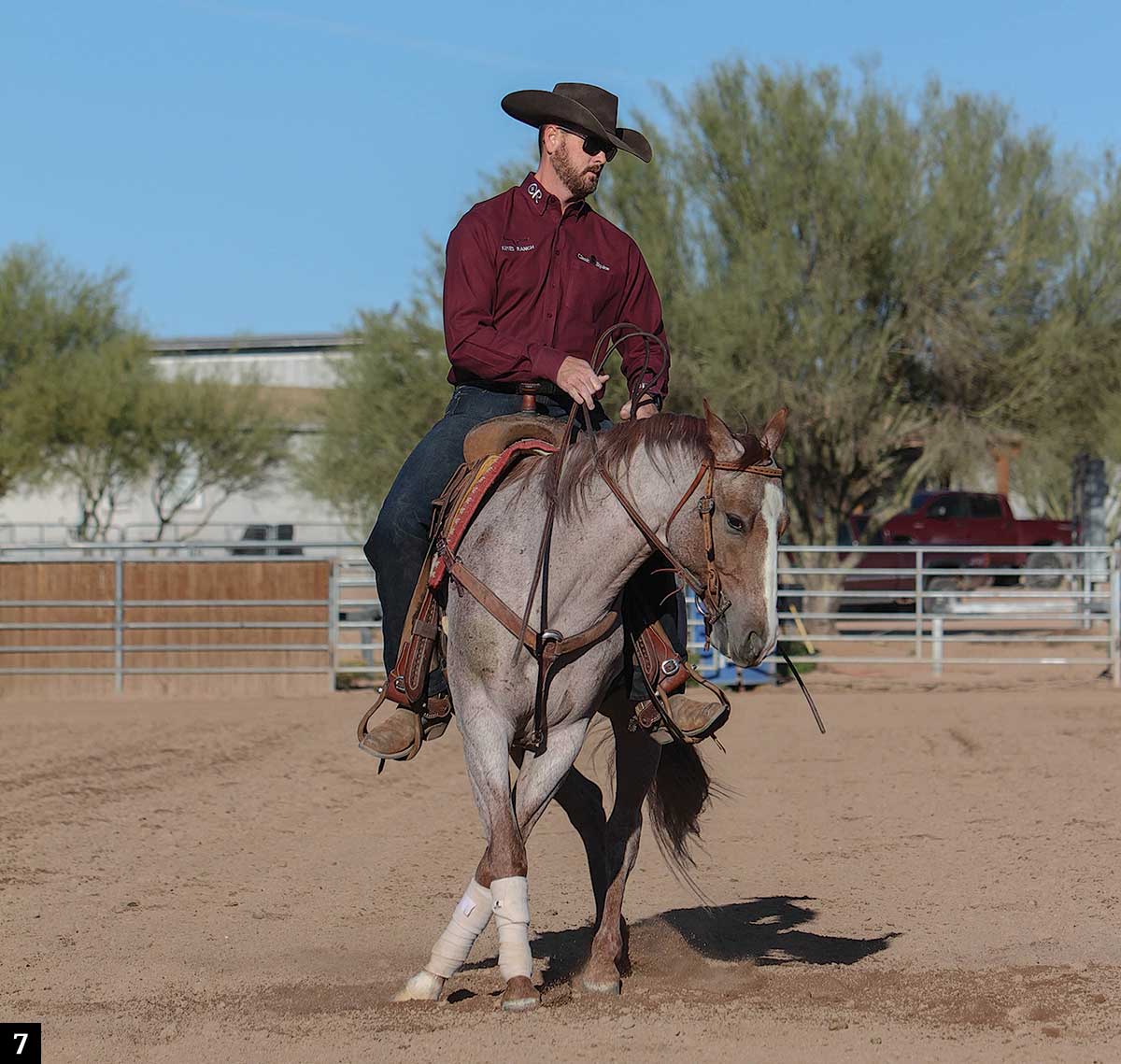
Seven
It all comes together for a solid turn. My body follows the turn, and my legs don’t get in my horse’s way. If my horse starts to get heavy in his turns, I can go back through these steps from the beginning to tune him up at home or at a horse show.
Shadd Parkinson, Scottsdale, Arizona, is a lifelong horseman. Growing up, he successfully competed in everything from Western pleasure to halter to cutting. He now focuses on and holds top titles in reining, working cow horse, ranch riding, and cutting. Learn more at shaddparkinson.com.






